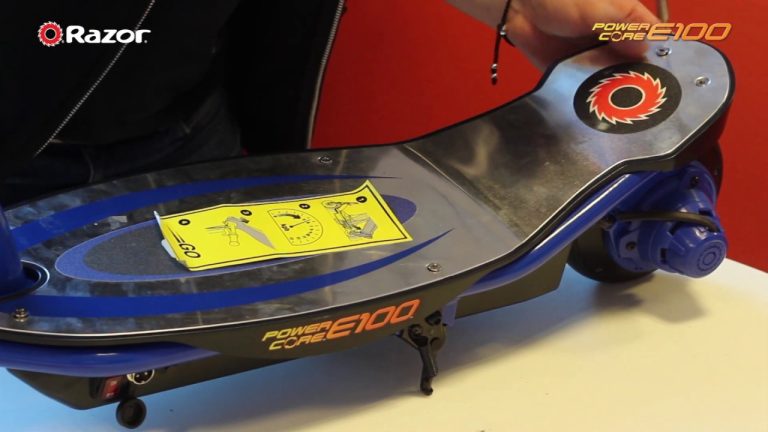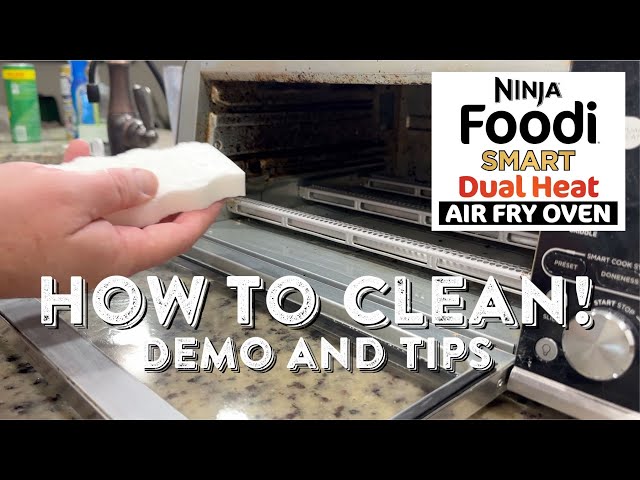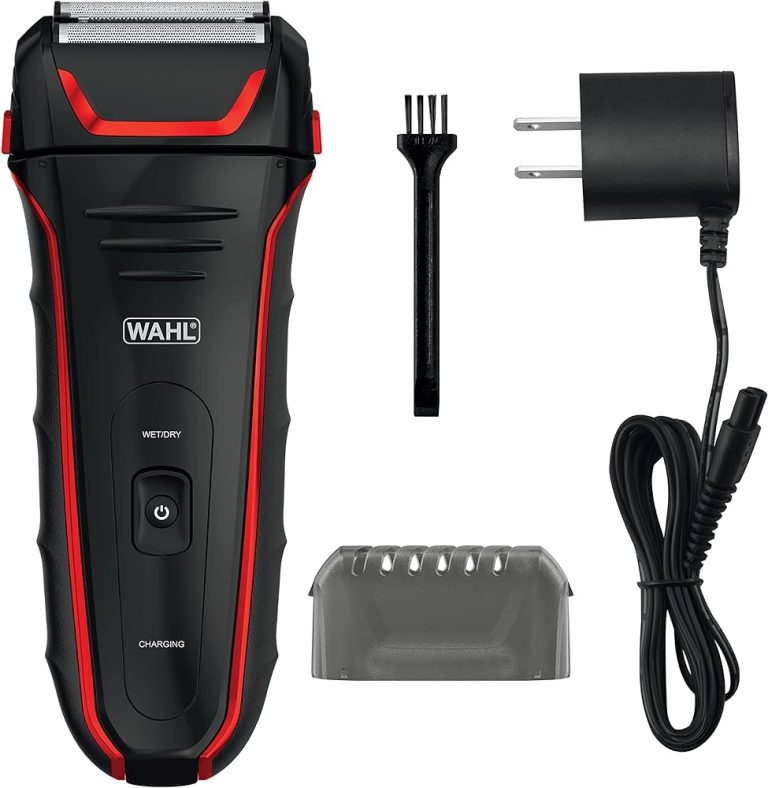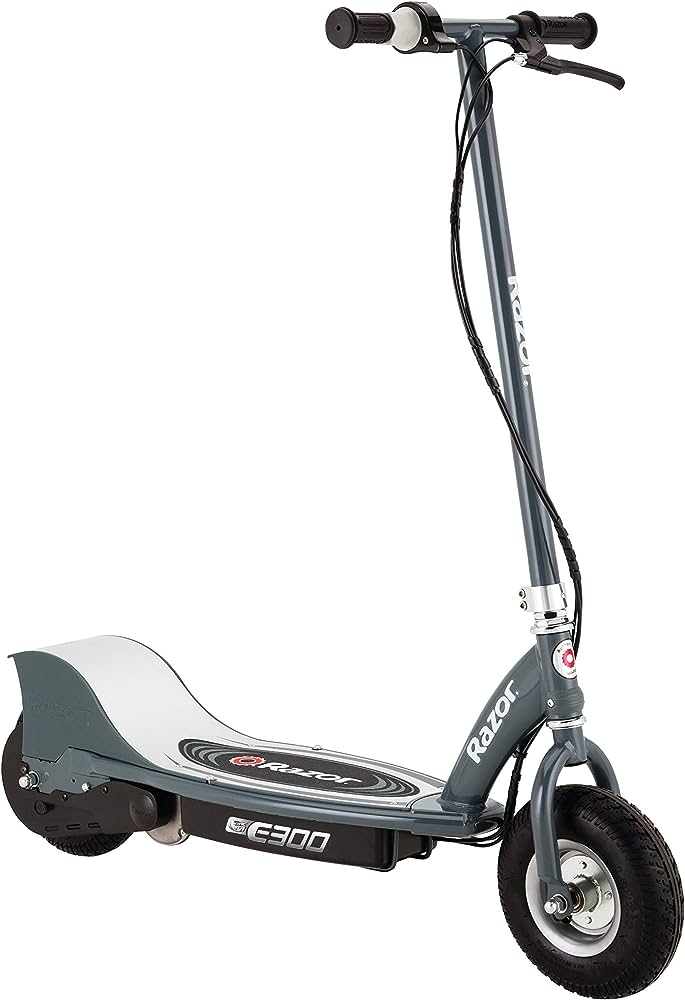How to Put a Beard Trimmer Back Together?
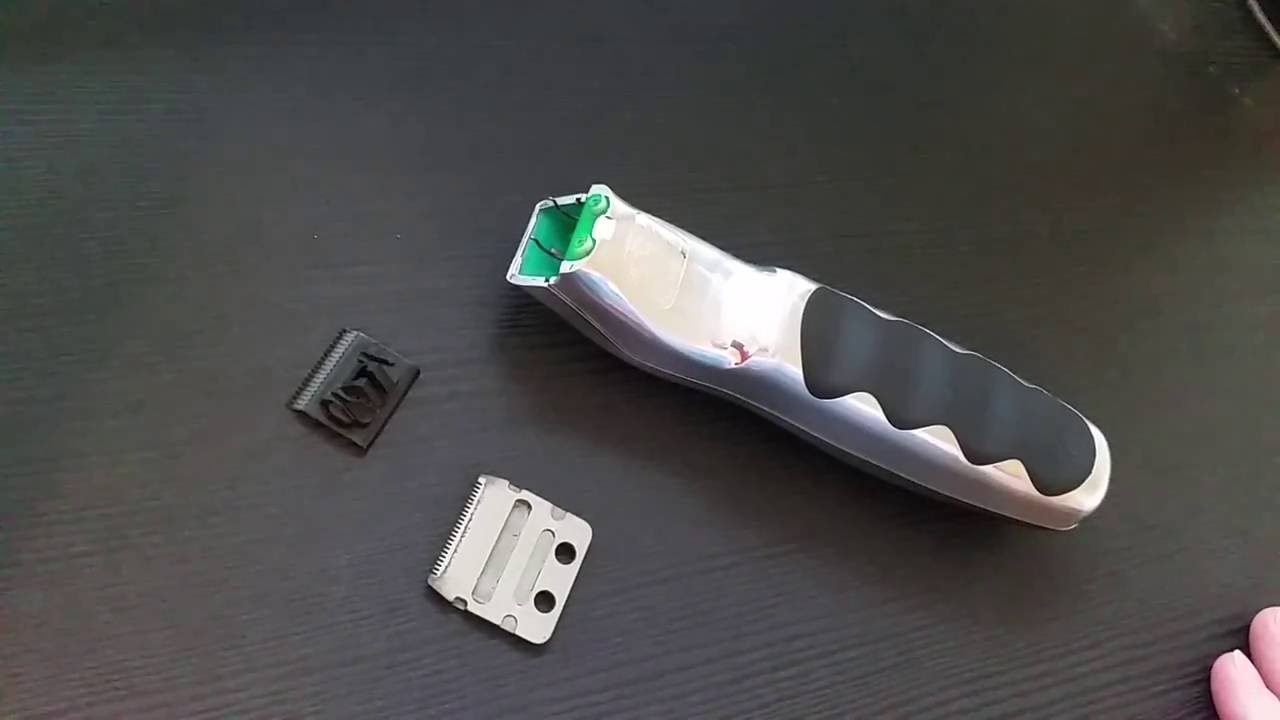
To put a beard trimmer back together, first align the blades with the corresponding slots and gently press them into place. Next, carefully snap the trimmer head back onto the body until it clicks securely.
Having a well-maintained beard trimmer is crucial for maintaining a neat and stylish beard. Unfortunately, trimmers can sometimes come apart, whether due to accidental disassembly or improper handling. If you find yourself in this situation, don’t worry. Putting a beard trimmer back together is a simple task that requires a few easy steps.
We will guide you through the process of reassembling your beard trimmer to get it back in working order. By following our instructions, you’ll have your trimmer ready for use in no time.
Importance Of Properly Assembling A Beard Trimmer
Properly assembling a beard trimmer is crucial for its functionality, performance, and longevity. Whether you’re disassembling the trimmer for cleaning or replacing parts, knowing how to put it back together correctly ensures that it operates efficiently and safely. In this article, we will explore the importance of properly assembling a beard trimmer and provide you with step-by-step instructions on how to do it.
Maintaining functionality and performance
When you disassemble a beard trimmer, it’s essential to put it back together correctly to maintain its functionality and performance. Each component of the trimmer is designed to work together in harmony, allowing for precise trimming and grooming of your facial hair. If these components are not assembled properly, the trimmer may not function as intended, resulting in an uneven trim or an uncomfortable grooming experience.
To maintain the functionality and performance of your beard trimmer, follow these steps when putting it back together:
- Organize the parts: Before starting the reassembly process, make sure you have all the parts of the trimmer laid out in front of you. This includes the blades, guards, screws, and any other detachable components.
- Clean the parts: If you’ve cleaned the trimmer components, make sure they are completely dry before reassembling. Damp parts can hinder the functionality of the trimmer and potentially cause damage.
- Align the blades: Carefully align the blades and ensure they are properly seated in their designated slots. The blades should be parallel and securely fixed in place to ensure a smooth and precise trimming experience.
- Attach the guards: If your trimmer has guards for different length settings, attach them according to your desired grooming style. Make sure they are securely locked in place to prevent them from shifting during use.
- Tighten the screws: If any screws were removed during disassembly, tighten them to the correct torque. This ensures that the trimmer remains stable and prevents any loose parts that may affect its performance.
Preventing damage and wear
Proper assembly also plays a vital role in preventing damage and wear to your beard trimmer. If the trimmer is not put back together correctly, it may cause unnecessary strain on certain components, leading to accelerated wear and tear. This can result in reduced trimming efficiency, decreased battery life, and potential malfunctions.
To prevent damage and wear, follow these tips when reassembling your beard trimmer:
- Avoid overtightening screws: While it’s essential to secure the screws properly, overtightening them can lead to stripped threads or even crack the casing. Make sure the screws are tightened securely, but not excessively.
- Properly align movable parts: If your trimmer has movable parts, such as an adjustable guard or a swivel head, ensure they are aligned correctly during reassembly. Failure to do so can cause them to get stuck or operate improperly.
- Follow manufacturer’s instructions: Always refer to the manufacturer’s user manual or instructions when reassembling your beard trimmer. Different models may have specific requirements or unique assembly techniques, which are crucial to follow for optimal performance.
Ensuring safety during use
Properly assembling your beard trimmer is not only important for functionality and longevity but also for ensuring your safety during use. A securely assembled trimmer minimizes the risk of accidents, such as the blades dislodging or detaching while trimming, which can cause cuts and injuries.
Here are some safety considerations when putting your beard trimmer back together:
- Inspect the blades: Before reassembling, inspect the blades for any signs of damage or dullness. Damaged or dull blades can cause pulling or uneven cutting and should be replaced to maintain safe trimming practices.
- Check for loose parts: Ensure all parts are tightly secured and there are no loose components that could potentially detach during use.
- Test the trimmer: Once you have reassembled the trimmer, test it before using it on your face. Check if all the functions are working correctly to ensure a safe and efficient grooming experience.
By following these guidelines for proper assembly, you not only maintain the functionality, performance, and safety of your beard trimmer, but you also protect your investment and ensure a well-groomed beard every time you use it.
Identifying The Parts Of A Beard Trimmer
When it comes to maintaining a well-groomed beard, a beard trimmer is an indispensable tool. However, from time to time, you may need to disassemble and put it back together for cleaning or maintenance purposes. To ensure you put your beard trimmer back together correctly, it is essential to identify the various parts involved. In this article, we will explore the key components of a beard trimmer and guide you through the process of identifying each one.
Blade Assembly
The blade assembly is one of the most crucial parts of a beard trimmer. It consists of the blades that do the actual cutting and trimming of your facial hair. The assembly typically comprises two blades: a stationary blade and a moving blade which oscillate back and forth. These sharp blades are responsible for delivering a precise and clean trim.
Housing or Casing
The housing or casing of the beard trimmer refers to the outer body that encloses the internal components. It often provides a comfortable grip and acts as a protective cover for the delicate parts inside. The housing is usually made of durable materials such as plastic or metal to ensure longevity and sturdiness.
Trimming Guard Attachments
Trimming guard attachments are an essential accessory for your beard trimmer. These attachments come in various sizes and styles, allowing you to achieve different lengths and styles of facial hair. The guards are easily attachable to the blade assembly and serve as a barrier between the blades and your skin, preventing accidental cuts or nicks.
Power Switch and Controls
The power switch and controls on a beard trimmer enable you to turn the device on and off and adjust the cutting length. The position and design of the power switch may vary depending on the model of your trimmer. It is typically located on the handle or the body of the trimmer for easy access. Some models may also include additional controls for specialized features, such as adjustable speed settings or precision trimming.
To summarize, identifying and understanding the different parts of a beard trimmer is essential for successful disassembly and reassembly. The blade assembly, housing or casing, trimming guard attachments, and power switch and controls are the primary components you need to be familiar with. By familiarizing yourself with these parts, you will be able to confidently put your beard trimmer back together and ensure its proper functioning.
Disassembling A Beard Trimmer
Disassembling a beard trimmer may seem like a daunting task, especially if you are not familiar with the inner workings of these devices. However, with a little patience and a basic understanding of the components, you can easily take apart a beard trimmer for cleaning or repair purposes. In this section, we will guide you through the step-by-step process of disassembling a beard trimmer, starting with the removal of the blade assembly.
Removal of Blade Assembly
The blade assembly is one of the key components of a beard trimmer, responsible for cutting and shaping your facial hair. To remove the blade assembly, follow these simple steps:
- Turn off the beard trimmer and unplug it from the power source to ensure your safety.
- Inspect the trimmer head and locate the release mechanism or button that holds the blade assembly in place.
- Press or slide the release mechanism to loosen the blade assembly.
- Carefully lift the blade assembly away from the trimmer head, taking note of any small screws or attachments that may need to be removed.
- Place the blade assembly in a safe and clean location, away from any liquids or sharp objects.
Detaching the Housing or Casing
Once you have removed the blade assembly, you can proceed to detach the housing or casing of the beard trimmer. This step allows you to access the internal components for further disassembly or cleaning. To detach the housing or casing:
- Inspect the trimmer body and locate any screws or clips that secure the housing or casing in place.
- Using a suitable screwdriver or tool, carefully remove the screws or release the clips to loosen the housing.
- Gently lift the housing or casing away from the main body of the trimmer, being cautious not to damage any wires or delicate parts.
- Set the housing or casing aside in a safe area where it will not collect dust or debris.
Removing Trimming Guard Attachments
Many beard trimmers come with various trimming guard attachments that allow you to achieve different lengths or styles of facial hair. These attachments can be easily removed for cleaning or replacement. To remove trimming guard attachments:
- Inspect the trimmer head and locate the attachment slots or locking mechanism.
- Using your fingers or a small tool, carefully unlock or slide the attachments out of their slots.
- Once removed, clean the attachments separately using warm, soapy water and a soft brush.
- Allow the attachments to dry thoroughly before reattaching them to the trimmer head.
Taking Apart Power Switch and Controls
The power switch and controls of a beard trimmer are vital for its operation. If you need to disassemble these components for repair purposes, follow these steps:
- Inspect the trimmer body and identify the enclosure that houses the power switch and controls.
- Using a suitable tool, carefully remove any screws or clips securing the enclosure.
- Gently lift the enclosure to expose the power switch and controls.
- If necessary, disconnect any wires or connectors attached to the power switch and controls for further disassembly.
- Proceed with the required repairs or cleaning, ensuring proper reassembly when finished.
Disassembling a beard trimmer can be a useful skill to have in your grooming arsenal. It allows you to maintain and troubleshoot your trimmer efficiently, saving both time and money. However, it is essential to exercise caution and follow the manufacturer’s guidelines to avoid damaging any delicate components. Stay tuned for the next section, where we will guide you through the reassembly process of a beard trimmer.
Cleaning And Preparing The Components
Removing any debris or hair
To start cleaning and preparing your beard trimmer components, the first step is to remove any debris or hair that may have accumulated. Over time, hair clippings and other particles can get stuck in the blades or the trimmer’s housing, which can affect its performance.
To remove debris or hair, follow these simple steps:
- First, ensure that the beard trimmer is switched off and disconnected from any power source.
- Next, take a small cleaning brush or a toothbrush and gently brush off any visible hair or debris from the blades and other areas of the trimmer.
- If the hair is stubborn or hard to reach, you can use a pair of tweezers or a toothpick to carefully pull it out.
- Once you have removed as much hair and debris as possible, you can move on to the next step of the cleaning process: lubricating the blade assembly.
Lubricating the blade assembly
Ensuring that the blade assembly is properly lubricated is crucial for maintaining the performance and longevity of your beard trimmer. Regular lubrication helps reduce friction between the blades and ensures a smooth cutting action.
Follow these steps to lubricate the blade assembly:
- Start by applying a small amount of lubricating oil specifically designed for trimmers and clippers.
- Use a dropper or a similar tool to apply a few drops of the oil onto the blades. Be careful not to apply too much oil, as it can cause the trimmer to become greasy or clogged.
- Gently turn on the trimmer and let it run for a few seconds to allow the oil to spread evenly across the blades.
- After lubricating the blade assembly, it’s important to check for any damage or wear that may need attention before reassembling the trimmer.
Checking for any damage or wear
Inspecting the components of your beard trimmer for any signs of damage or wear is essential to prevent any potential hazards or malfunctions. Regular maintenance can help identify issues early on and ensure that your trimmer operates effectively.
Here are some tips for checking the components of your beard trimmer:
- Examine the blades for any signs of rust, dullness, or chipping. If you notice any damage, it may be necessary to replace the blades.
- Inspect the trimmer’s housing for cracks or loose parts. Repair or replace any damaged components as necessary.
- Check the power cord for any fraying or exposed wires. If there is any damage, it’s crucial to replace the cord to avoid electric shocks.
- Ensure that the trimmer’s attachments, such as combs or guards, are in good condition and securely attached.
By following these steps, you can effectively clean, lubricate, and inspect the components of your beard trimmer, ensuring its optimal performance and longevity. Remember to perform regular maintenance to keep your trimmer in top shape and enjoy hassle-free grooming sessions.
Reassembling The Beard Trimmer
After thoroughly cleaning and inspecting the parts of your beard trimmer, it’s time to put them back together. The reassembling process may seem daunting at first, but with a step-by-step approach, you’ll have your trimmer fully functioning in no time. In this section, we’ll guide you through the process, focusing on attaching the housing or casing, installing the blade assembly, securing trimming guard attachments, and reconnecting the power switch and controls.
Attaching the housing or casing
The first step in reassembling your beard trimmer is to attach the housing or casing. Make sure the housing is clean and free from any debris or hair. Align the housing with the appropriate slots or guide rails on the trimmer body. Gently press the housing down until it clicks into place. Double check to ensure the housing is securely attached.
Installing the blade assembly
Next, it’s time to install the blade assembly. Start by aligning the blades with the corresponding slots on the trimmer body. Insert the blade assembly into the trimmer body, ensuring a snug fit. Apply gentle pressure to make sure the blades are properly seated. Check that the blade assembly is secure and does not wobble or move.
Securing trimming guard attachments
If your beard trimmer came with trimming guard attachments, now is the time to secure them. Choose the appropriate trimming guard for your desired length and attach it to the blade assembly. Ensure the trimming guard is properly aligned with the blades and firmly in place. Take a moment to check that the guards are secure and will not detach during use.
Reconnecting power switch and controls
Lastly, you’ll need to reconnect the power switch and controls. Carefully locate the power switch and check for any loose wires or connections. If necessary, reattach any loose wires to their respective terminals. Once the power switch is securely connected, ensure all other controls such as intensity settings or mode switches are properly aligned and functioning. Test the controls to ensure they are responsive and working as intended.
Testing The Reassembled Beard Trimmer
After successfully reassembling your beard trimmer following the previous steps, it’s time to test the device to ensure its proper functionality. Testing the reassembled beard trimmer will involve checking for proper functionality, ensuring all parts are securely in place, and performing a test trim to ensure effectiveness.
Checking for Proper Functionality
Before moving forward with testing, it is essential to check if the beard trimmer is functioning as expected. The following steps will help you assess its functionality:
- Make sure the trimmer is turned off and disconnected from any power source.
- Inspect the power switch to verify that it moves freely and turns the device on and off smoothly.
- Confirm that the trimmer’s blades are sharp and properly aligned.
- Check the battery or power cord connection to ensure it is secure and not loose.
- Inspect the charging indicator, if applicable, to ensure it functions correctly.
Ensuring All Parts are Securely in Place
It is crucial to check if all the components of your beard trimmer are securely in place. This step will help avoid any potential accidents or malfunctions during use. To ensure that all parts are properly secured, you should:
- Examine the trimmer’s housing to confirm that it is tightly secured and free from any cracks.
- Check the attachment guards or blades to ensure they are firmly in place and do not wobble or move.
- Inspect the battery compartment or power cord connection to ensure they are secure and stable.
Performing a Test Trim to Ensure Effectiveness
Finally, it’s time to put your reassembled beard trimmer to the test. Following these steps will help validate its effectiveness:
- Choose a small section of facial hair to trim, ensuring it is representative of the type of hair you usually cut.
- Turn on the trimmer and hold it at a comfortable angle, ensuring the blades make contact with the hair.
- Gradually move the trimmer against the direction of hair growth, ensuring a smooth and even trim.
- Check the results to ensure the trim is to your satisfaction, with no snagging or pulling of hair.
If you encounter any issues during the testing process, double-check the reassembly steps to identify any possible mistakes. Repeating the process may be necessary until the trimmer functions properly.
Difficulty In Putting The Trimmer Back Together
Tips for Aligning the Housing or Casing
Putting a beard trimmer back together can be a bit tricky, especially when it comes to aligning the housing or casing. The housing is the outer shell of the trimmer that protects the internal components, while the casing is the cover that holds everything in place. If these parts are not properly aligned, it can result in an uneven trim or even damage to the trimmer.
If you find yourself struggling with aligning the housing or casing of your beard trimmer, here are some tips to help you:
- Inspect the housing and casing: Before attempting to put the trimmer back together, carefully inspect both the housing and the casing for any visible damage or obstructions. Ensure there are no loose or broken parts that may hinder the alignment process.
- Clean the trimmer: It’s important to clean any dirt, hair, or debris from the trimmer to ensure a smooth assembly process. Use a soft brush or cloth to gently wipe down the housing and casing.
- Identify alignment markers: Most beard trimmers have alignment markers or indicators on the housing and casing. These markers are usually small arrows or notches that help guide you in aligning the parts correctly. Look for these markers and take note of their positions before disassembling the trimmer.
- Align the markers: Once you have identified the alignment markers, carefully align the corresponding markers on the housing and casing. This will ensure that the parts fit together perfectly without any gaps or misalignments.
- Apply gentle pressure: After aligning the markers, apply gentle pressure to the housing and casing to secure them together. Make sure not to use excessive force as this may damage the trimmer. If the parts do not fit snugly, double-check the alignment and make any necessary adjustments.
Ensuring the Blade Assembly is Properly Seated
Another crucial aspect of putting a beard trimmer back together is ensuring the blade assembly is properly seated. The blade assembly houses the cutting blades and is responsible for achieving a clean and precise trim. If the blade assembly is not properly seated, it can affect the trimmer’s performance and potentially cause injury.
Here are some steps to ensure the blade assembly is properly seated:
- Clean the blades: Before reassembling the trimmer, clean the blade assembly thoroughly to remove any hair, oil, or debris that may have accumulated. This will help maintain the trimmer’s efficiency and longevity.
- Align the assembly: Take a close look at the blade assembly and identify the alignment markers or grooves. These markers are usually located on both the assembly and the trimmer’s body. Align these markers carefully to ensure the assembly fits securely into place.
- Press firmly: Once the blade assembly is aligned properly, press it firmly into place. Ensure that it sits snugly and securely without any wobbling or movement. Apply gentle pressure on all sides of the assembly to confirm its stability.
- Test the assembly: After reassembling the trimmer, it’s important to test the blade assembly by turning on the trimmer and running it over a small section of hair. Check if the blades are moving freely and if there are any unusual noises or vibrations. If everything seems to be in order, your trimmer is ready to use.
Properly assembling your beard trimmer is essential for its optimal performance and longevity. By following these tips, you can overcome the difficulty of putting your trimmer back together and enjoy a well-groomed beard every time.

Credit: www.instructables.com
Parts Not Fitting Properly Or Securely
When it comes to putting a beard trimmer back together, it’s important to ensure that all the parts fit properly and securely. There’s nothing worse than using a trimmer that feels loose or unstable, as it can result in an uneven trim and potential accidents. In this section, we will discuss how to check for any damaged or worn parts and provide troubleshooting tips for achieving a secure fit.
Checking for any damaged or worn parts
Before assembling your beard trimmer, it’s crucial to inspect each component for any signs of damage or wear. Damaged parts may compromise the trimmer’s functionality and prevent a secure fit. Here are some steps to follow:
- Examine the blades: Ensure that the blades are sharp, free from rust, and securely attached to the trimmer head. If you notice any dullness or signs of wear, it’s recommended to replace them with new ones for optimal performance.
- Inspect the comb attachments: Carefully check the comb attachments for any cracks, bent teeth, or loose connections. If you find any defects, consider replacing them to maintain a secure fit during trimming.
- Check the housing and body: Look for any cracks, dents, or loose components in the housing and body of the trimmer. If you detect any damage, it’s important to address it before reassembling the trimmer.
Troubleshooting tips for a secure fit
If you’re experiencing issues with parts not fitting properly or securely, here are some troubleshooting tips to help you achieve a secure fit:
- Ensure proper alignment: When reassembling the trimmer, take note of the alignment of each part. Make sure they are correctly positioned and securely locked in place. Refer to the user manual or manufacturer’s instructions for guidance if needed.
- Double-check connections: Pay close attention to the connections between various components, such as the blades, trimmer head, and comb attachments. Ensure they are tightly fitted and not loose, as this can cause instability during use.
- Apply gentle pressure: When attaching or securing pieces together, apply gentle pressure using your hands or appropriate tools if necessary. Avoid using excessive force, as it may lead to damage or breakage of the parts.
By following these guidelines, you can improve the fit and stability of your beard trimmer, ensuring a smoother trimming experience. Remember, regular maintenance and care will help prolong the lifespan of your trimmer, so it’s essential to address any issues promptly and maintain the device properly.
Beard Trimmer Still Not Functioning After Reassembling
After carefully disassembling and reassembling your beard trimmer, it can be incredibly frustrating to find that it is still not functioning properly. However, there are a few key steps you can take to troubleshoot and resolve the issue. In this guide, we will explore two important avenues for getting your beard trimmer up and running again: double-checking the assembly process and seeking professional assistance if necessary.
Double-checking the assembly process
When it comes to reassembling your beard trimmer, even the smallest oversight can lead to malfunctioning. By double-checking the assembly process, you can ensure that every component is in its correct place and properly aligned. Here are a few key steps to follow:
- Review the user manual: Before diving into the assembly process, it is always a good idea to refer back to the user manual that came with your beard trimmer. This invaluable resource will provide detailed instructions and diagrams to help you correctly align each component.
- Inspect the blades: Carefully examine the blades to make sure they are clean, sharp, and free from any hair or debris. If necessary, use a soft brush to remove any buildup that could be causing the malfunction.
- Check the battery connection: Ensure that the battery is properly inserted and connected to the trimmer. A loose or faulty battery connection can result in a lack of power and functionality.
- Verify the switch positions: Depending on your specific trimmer model, there may be multiple switches or buttons that need to be in the correct positions for the trimmer to function. Double-check that all switches are set correctly.
- Tighten any loose screws: Loose screws can disrupt the internal mechanisms of your trimmer, causing it to malfunction. Take a moment to inspect and tighten any screws that may have come loose during the reassembly process.
Seeking professional assistance if necessary
If, after double-checking the assembly process, your beard trimmer is still not functioning, it may be time to consider seeking professional assistance. Trained technicians have the expertise and specialized tools to diagnose and repair any issues that may be causing your trimmer to malfunction. Rather than continuing to tinker with it yourself, reaching out to a professional can help you avoid causing further damage. Here are a few steps to take:
- Research reputable service centers: Look for service centers or repair shops that specialize in beard trimmers. Reading reviews and testimonials from previous customers can give you a good idea of their expertise and reliability.
- Contact the manufacturer: If your trimmer is still under warranty, reaching out to the manufacturer is a great option. They may be able to provide guidance on troubleshooting steps or direct you to an authorized service center for repairs.
- Explain the issue: When contacting a professional for assistance, be sure to clearly explain the problem you are experiencing. The more information you can provide, the better equipped they will be to diagnose and address the issue.
- Follow their recommendations: Once you have received guidance or recommendations from a professional, follow their instructions carefully. This will ensure that your trimmer receives the necessary repairs or adjustments to get it back in working order.
By double-checking the assembly process and seeking professional assistance if necessary, you can increase your chances of getting your beard trimmer functioning again. Remember, patience and diligence are key when troubleshooting any electronic device.
Frequently Asked Questions On How To Put A Beard Trimmer Back Together
How Do You Put Clippers Back Together?
To put clippers back together, carefully align the blades and attach them to the clipper body. Ensure the screws are tight but not over-tightened. Connect the power cord or battery, and test the clippers to ensure they are properly functioning.
How Do You Put Clipper Blades Together?
To put clipper blades together, follow these steps:
1. Make sure the blades are clean and free of debris.
2. Align the teeth of the upper and lower blades.
3. Insert the tongue of the upper blade into the corresponding slot of the lower blade.
4. Push down firmly until they click into place.
5. Test the blades to ensure they are properly aligned and secured.
How Do You Put A Conair Beard Trimmer Back Together?
To put a Conair beard trimmer back together, follow these steps:
1. Gather all the trimmer parts.
2. Align the blade assembly with the trimmer body.
3. Slide the assembly into place until it clicks.
4. Reattach any guards or attachments.
5. Plug in the trimmer to ensure it’s working properly.
How Do You Put A Wahl Nose Trimmer Back Together?
To put a Wahl nose trimmer back together, follow these steps:
1. First, locate the trimmer head and remove it from the device.
2. Then, carefully reattach the trimmer head to the main unit, ensuring it is securely fastened.
3. Test the trimmer to ensure it is functioning properly.
Conclusion
Putting a beard trimmer back together is a simple task that can save you time and money. By following these steps, you can easily reassemble your trimmer and keep it in good working condition. Remember to handle the parts with care and refer to the manufacturer’s instructions for any specific guidelines.
With a little patience and attention to detail, you’ll have your trimmer up and running like new in no time. Take pride in your DIY skills and enjoy a well-groomed beard.
